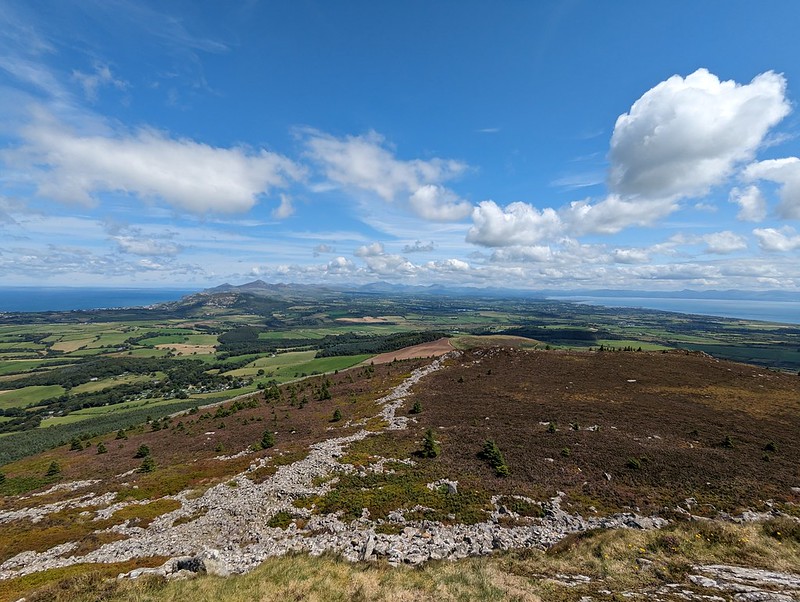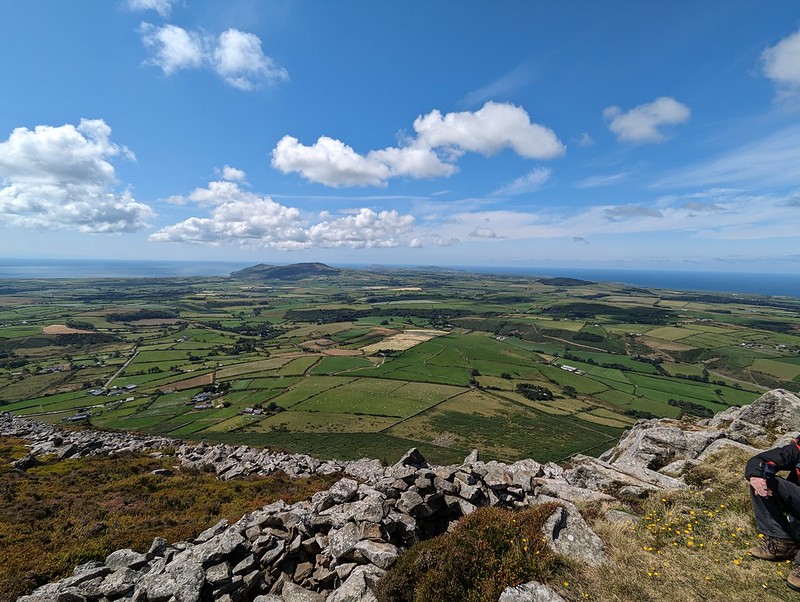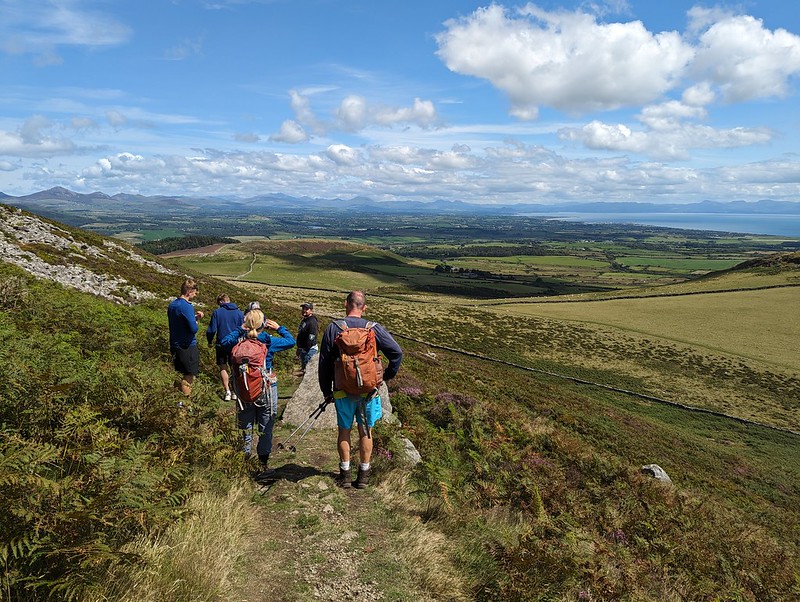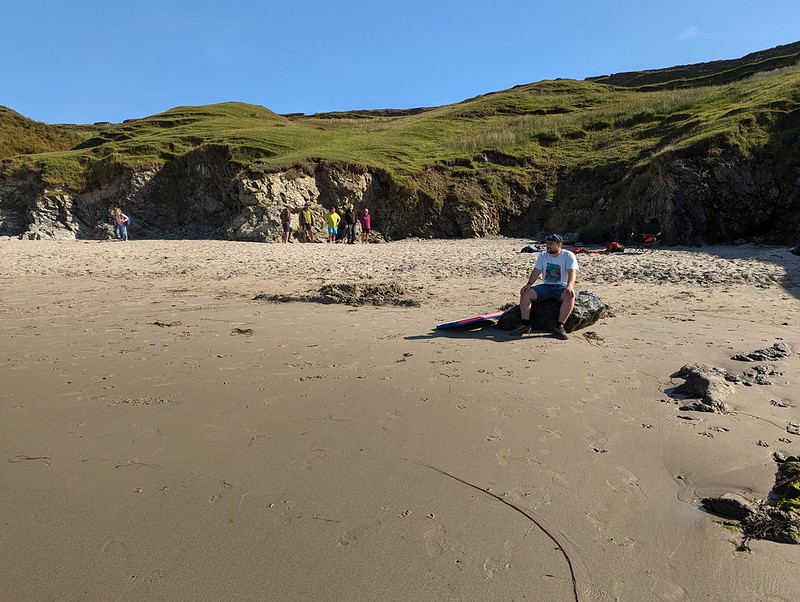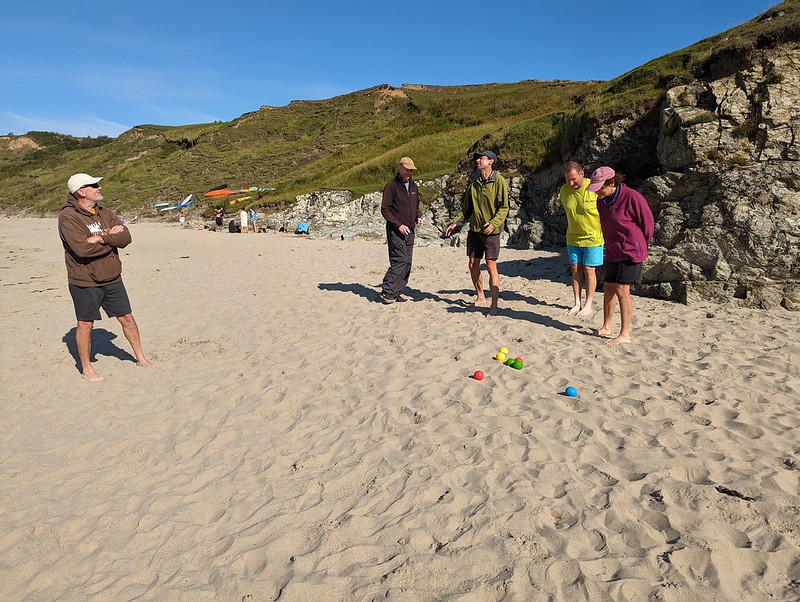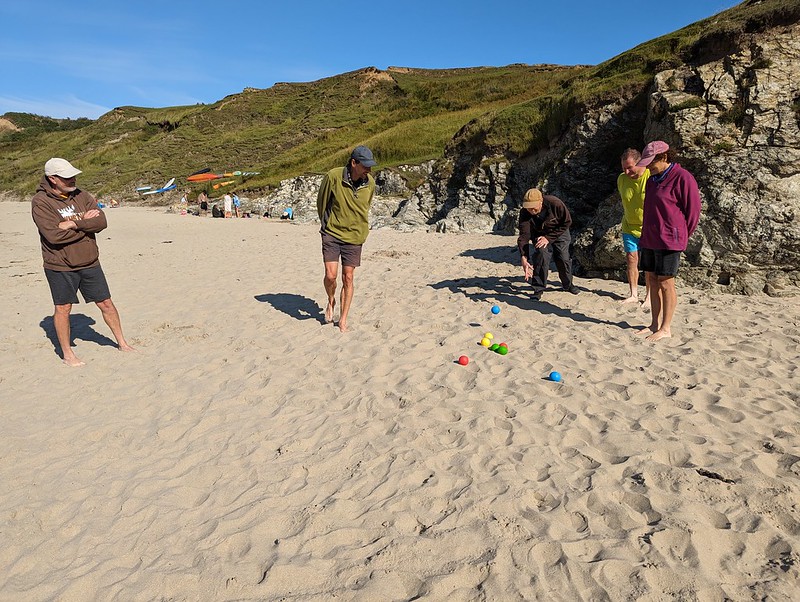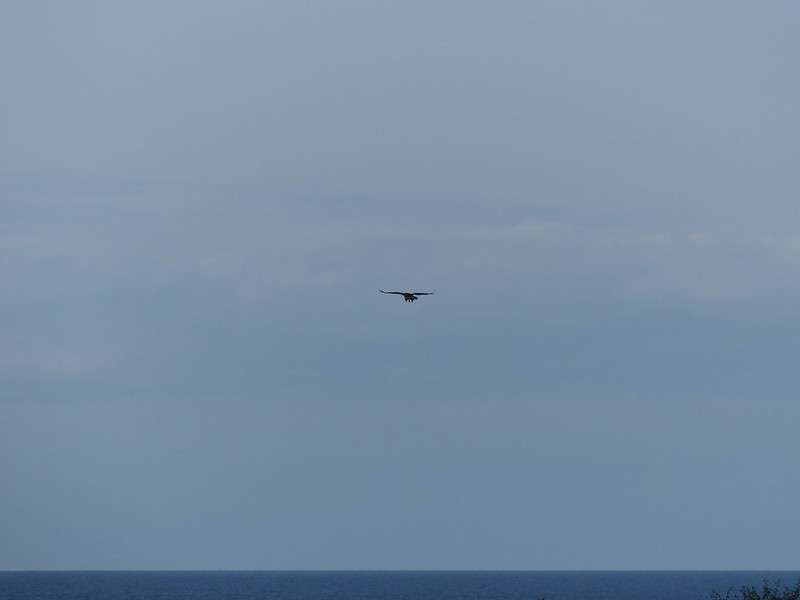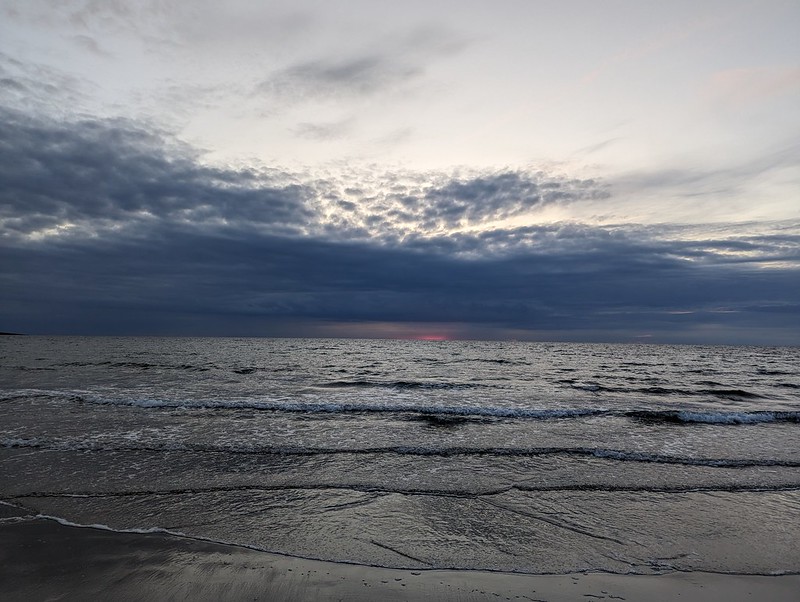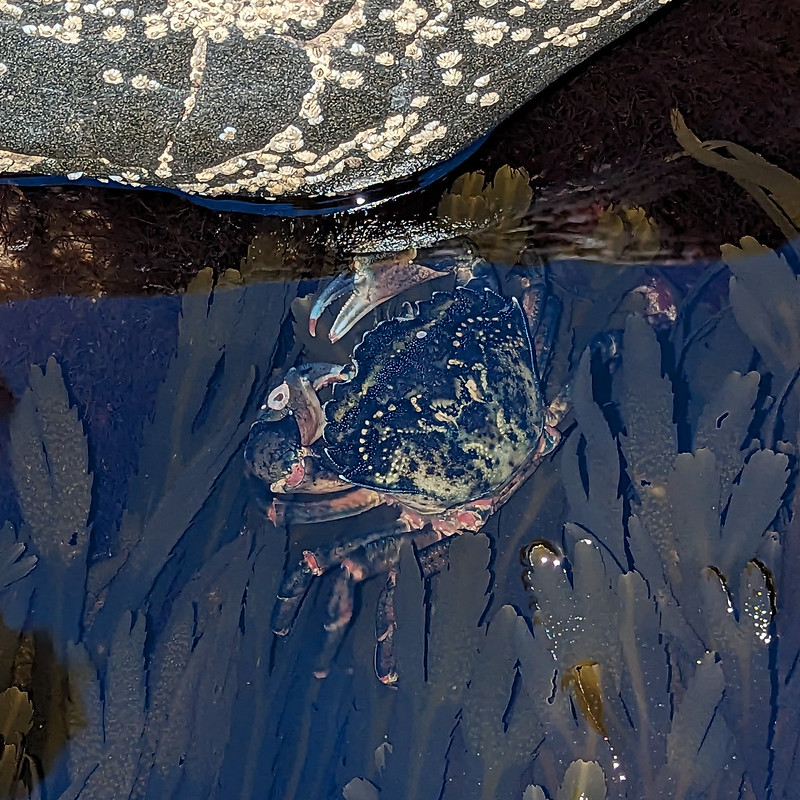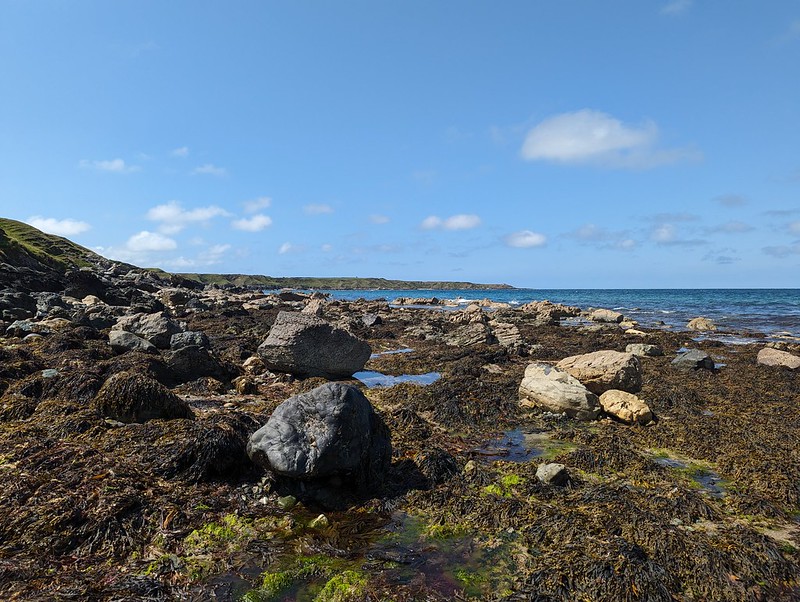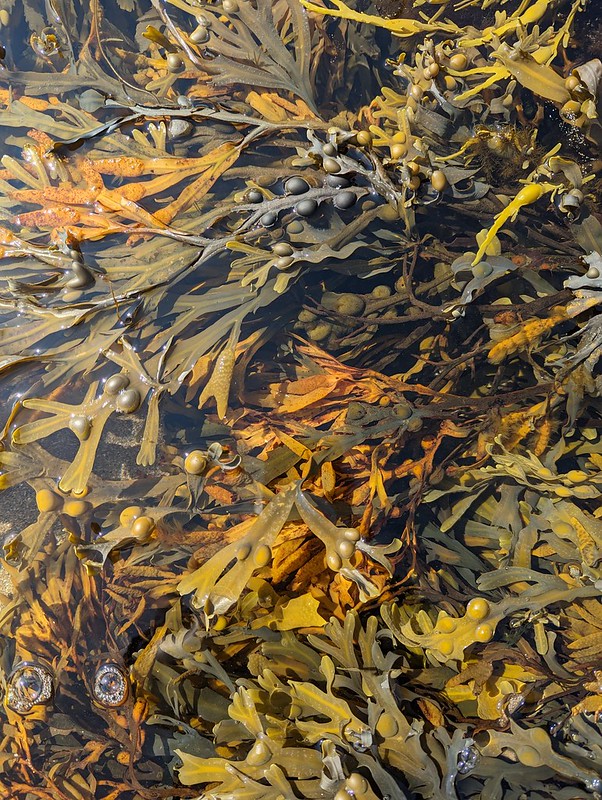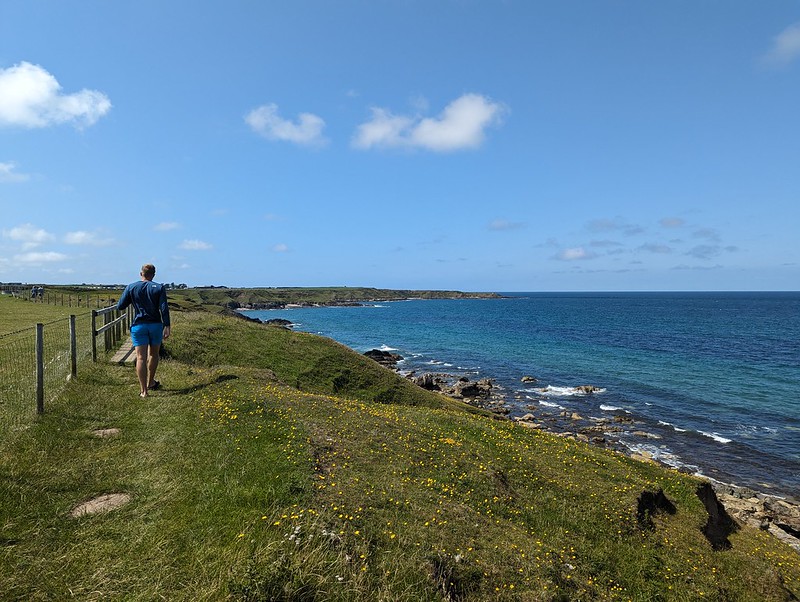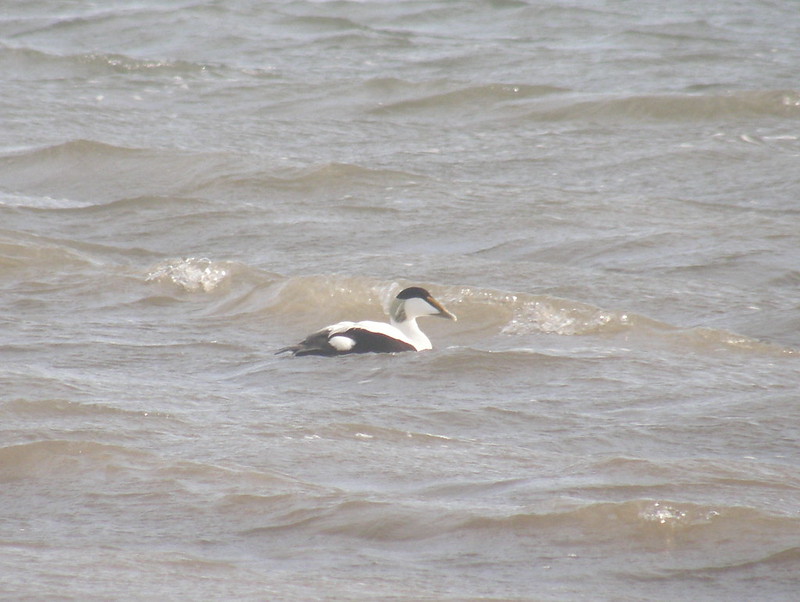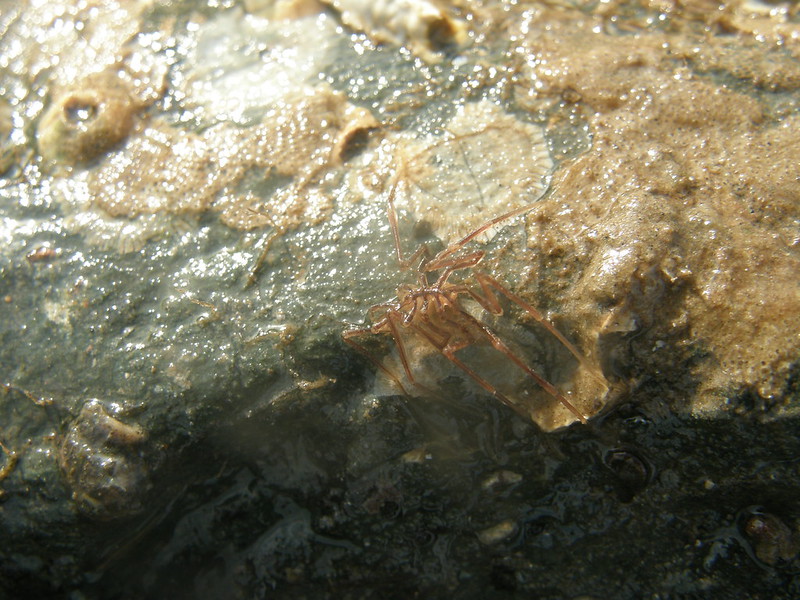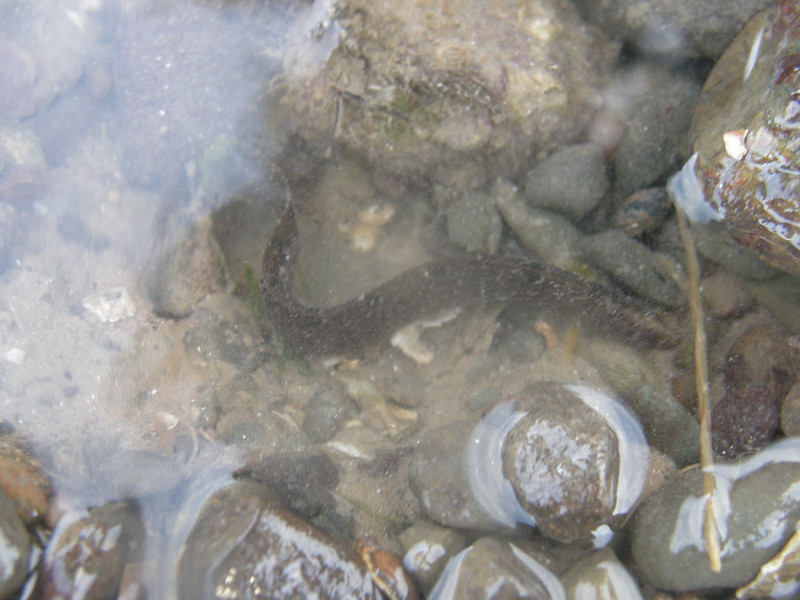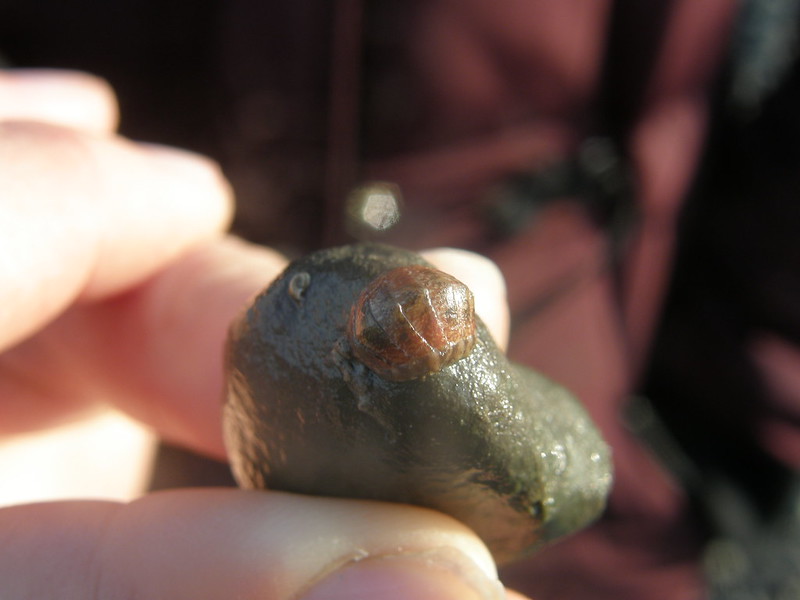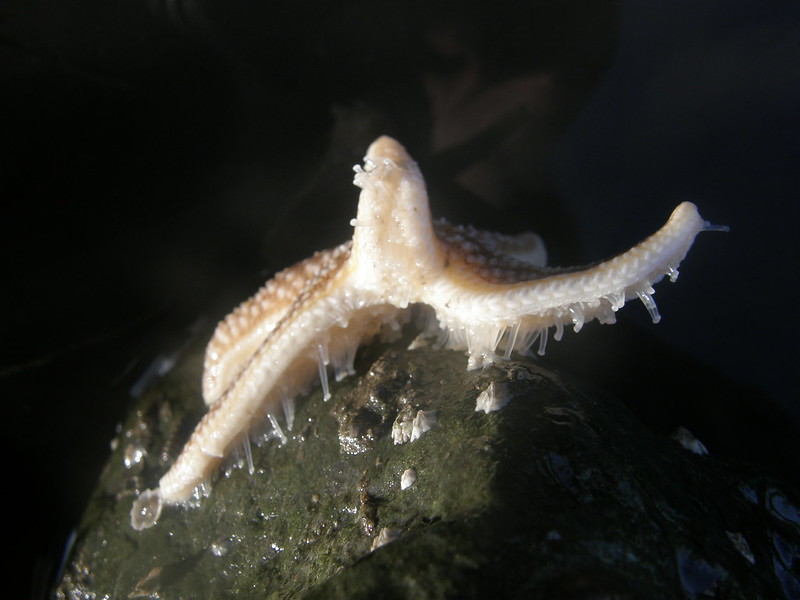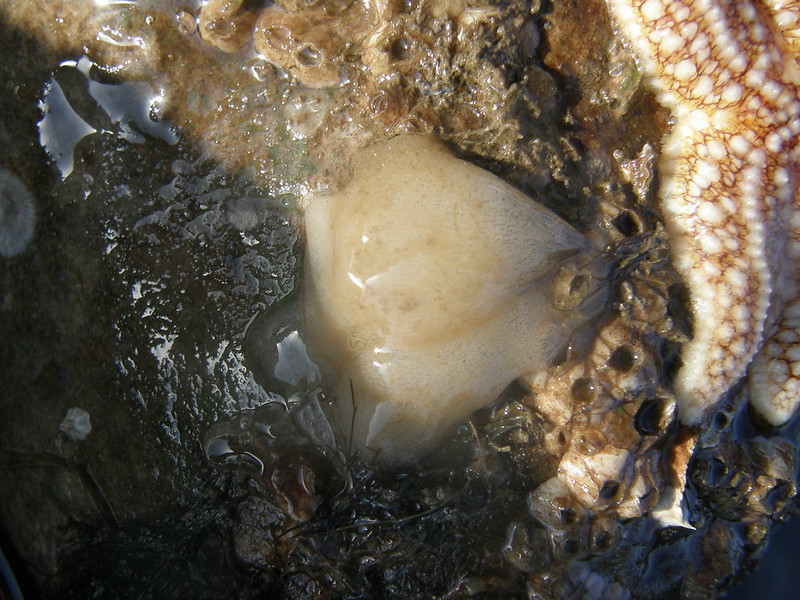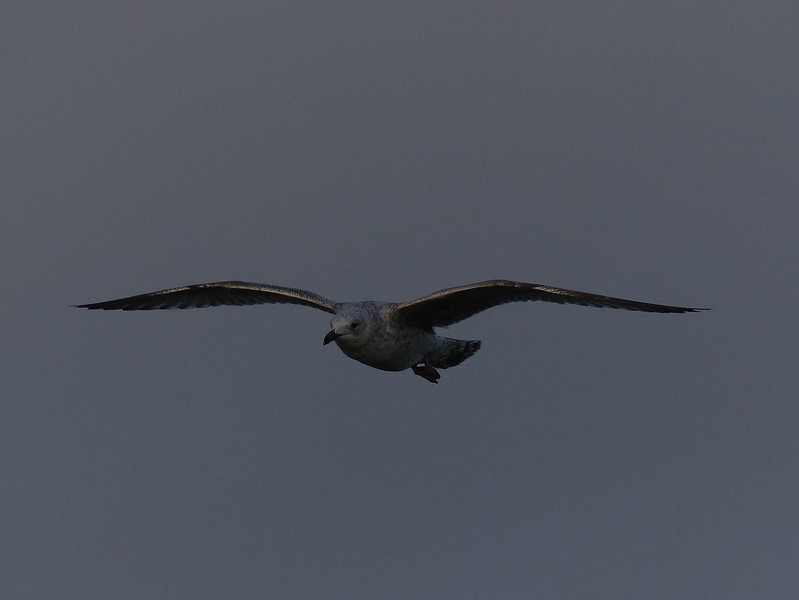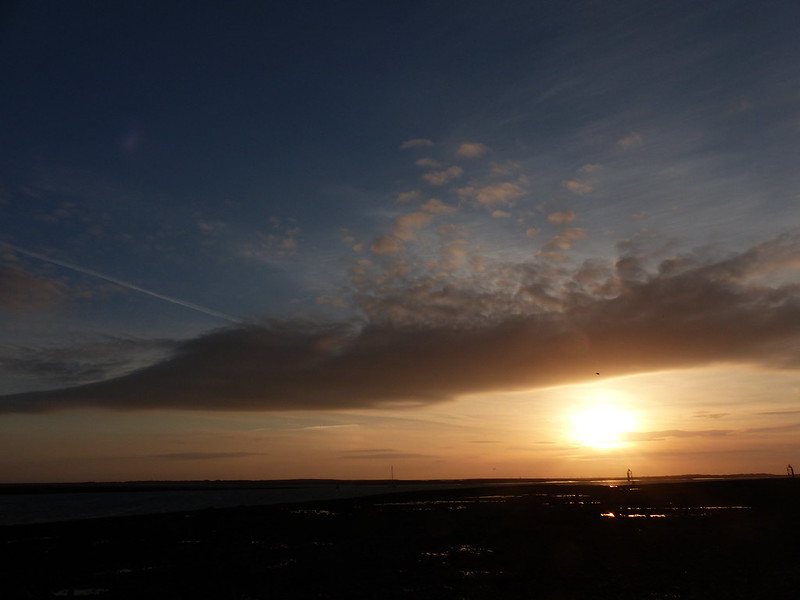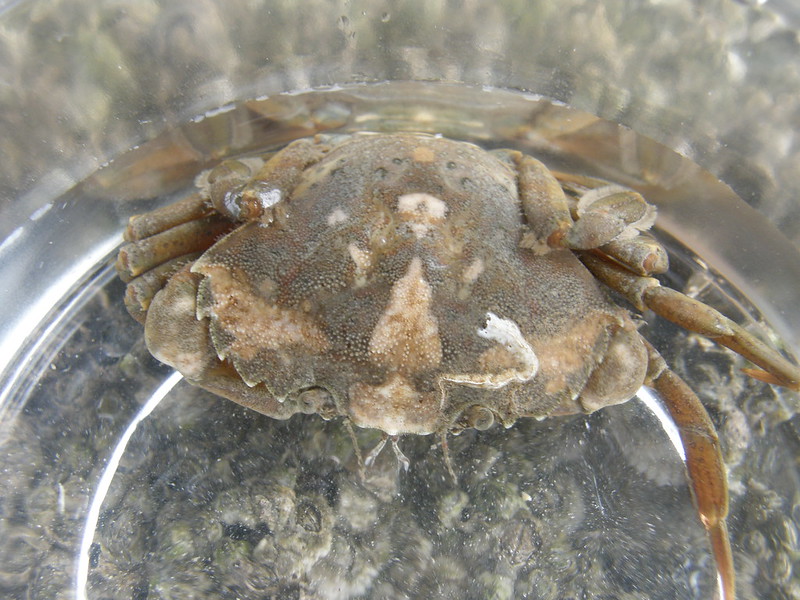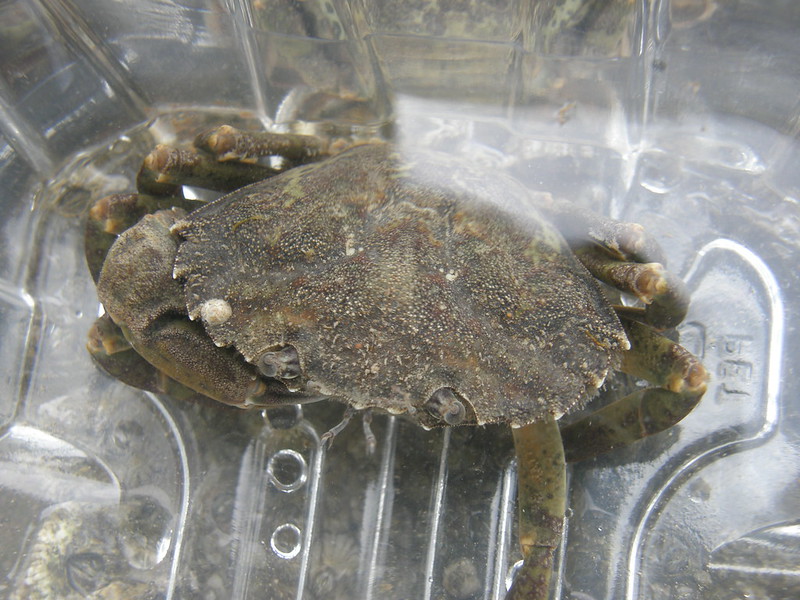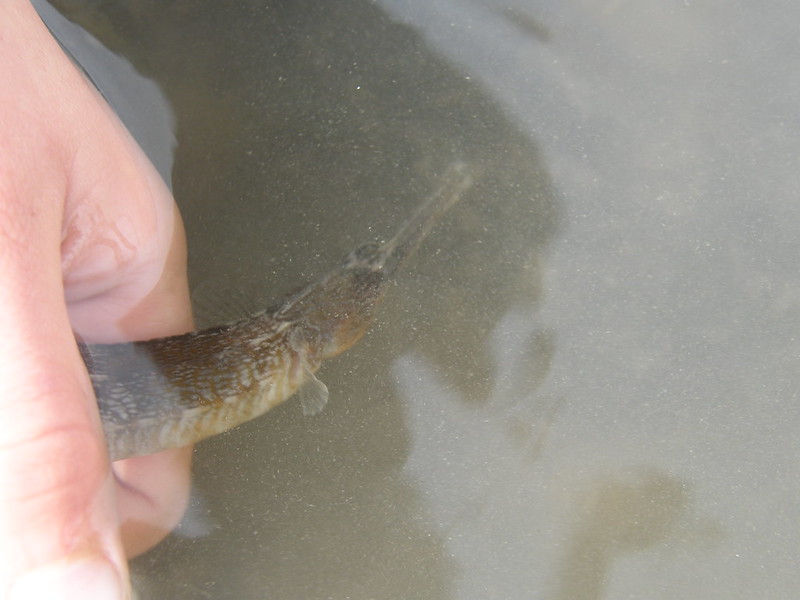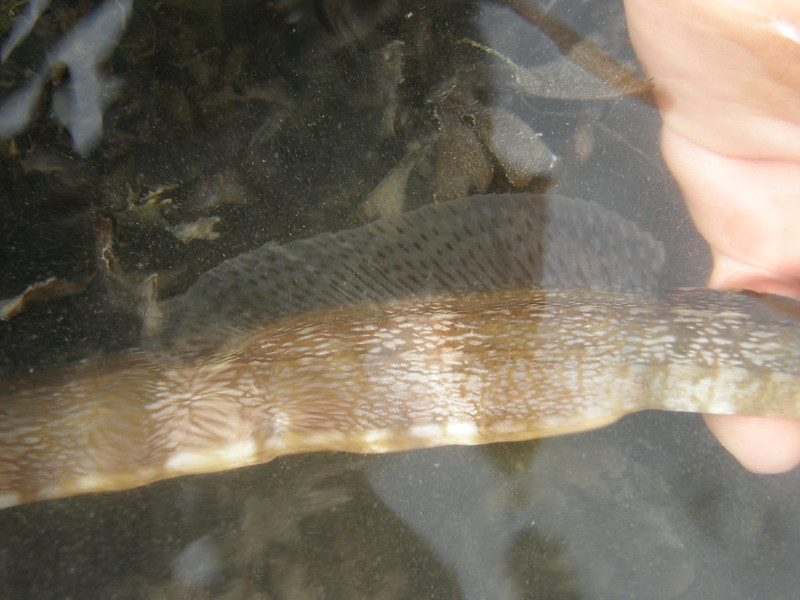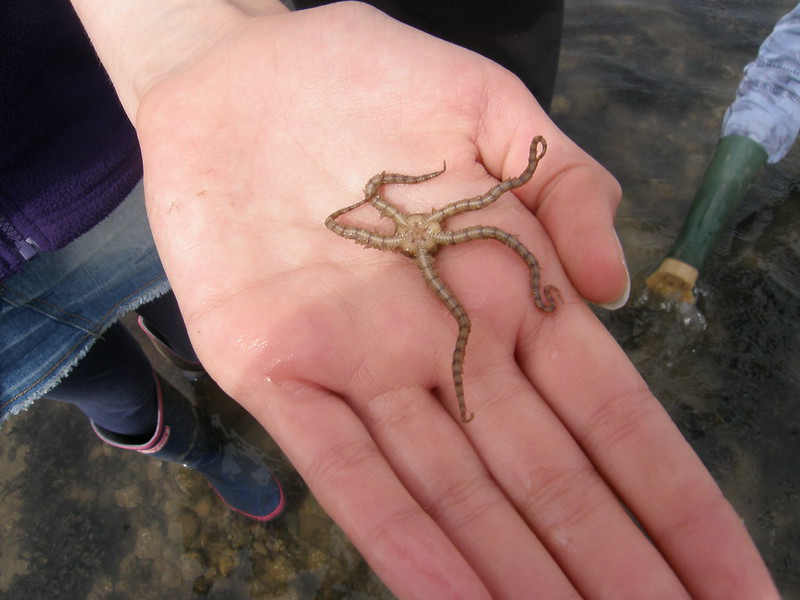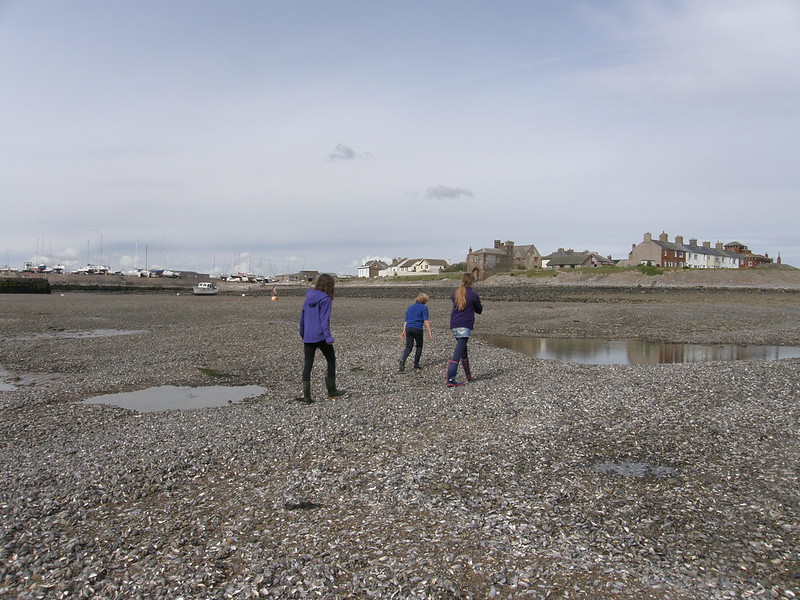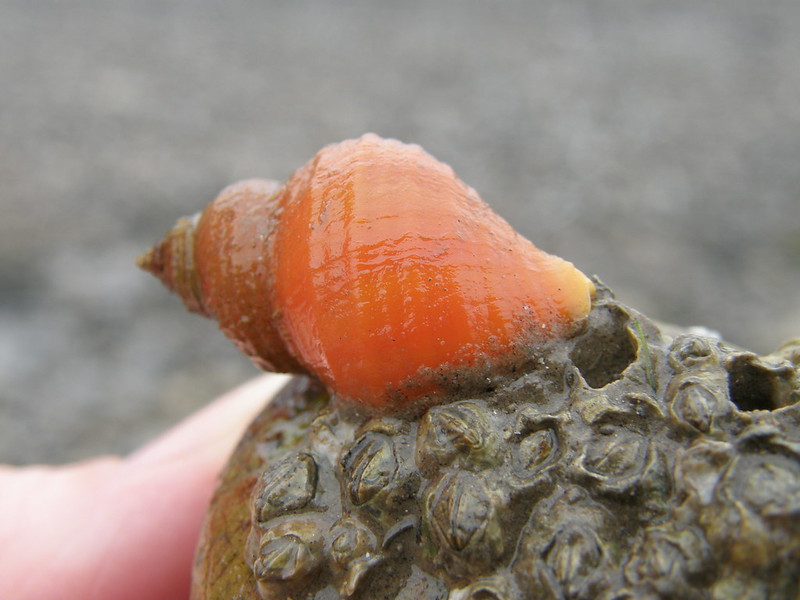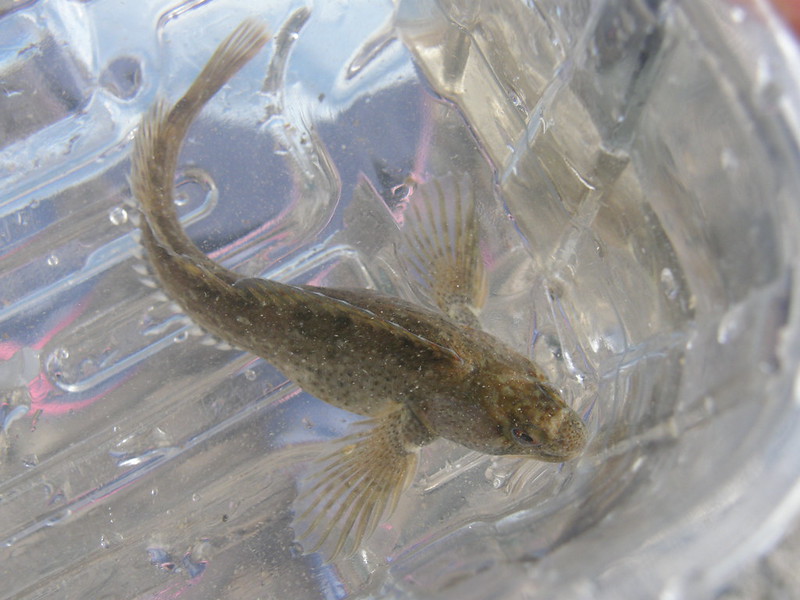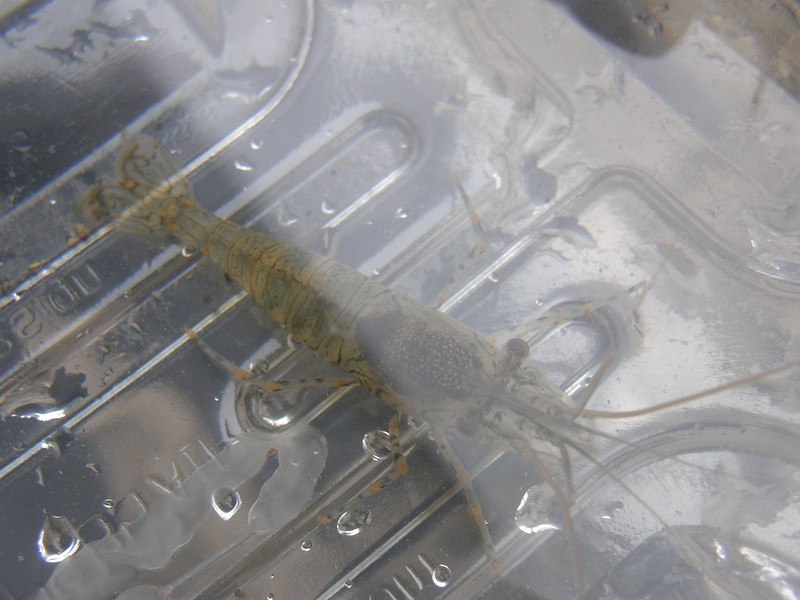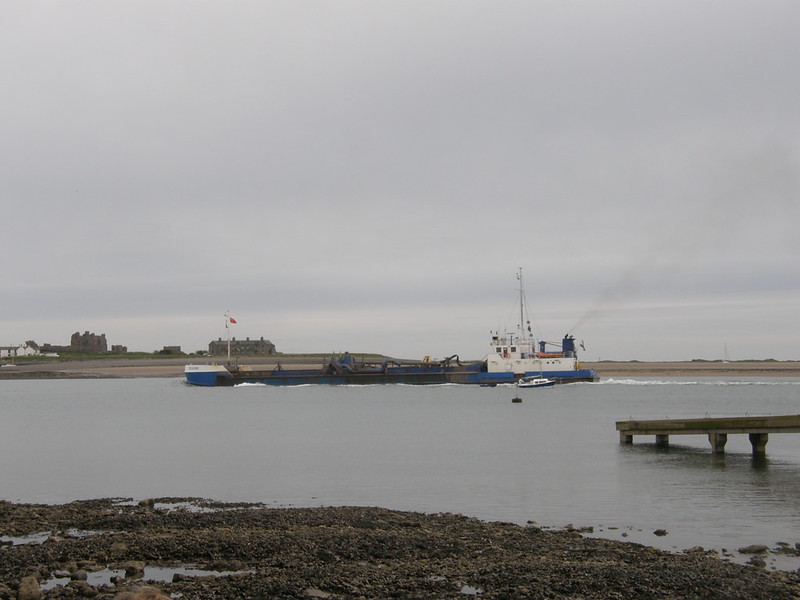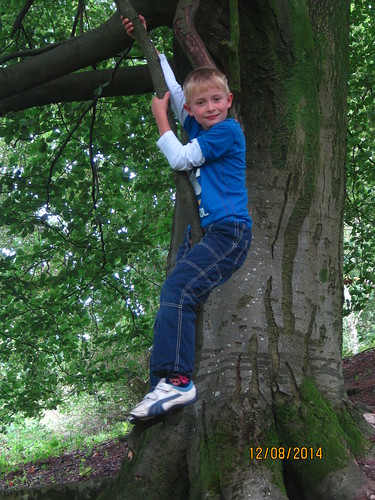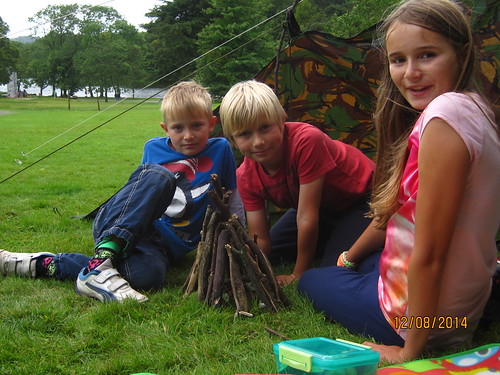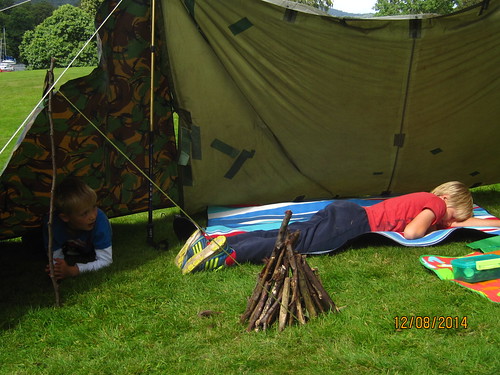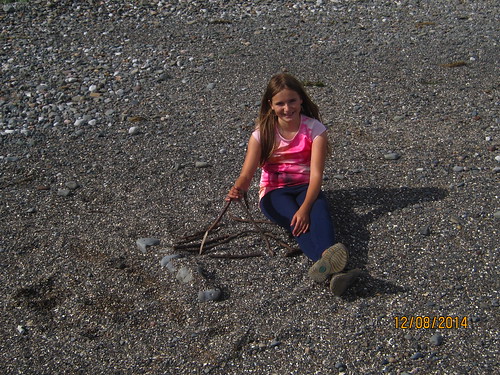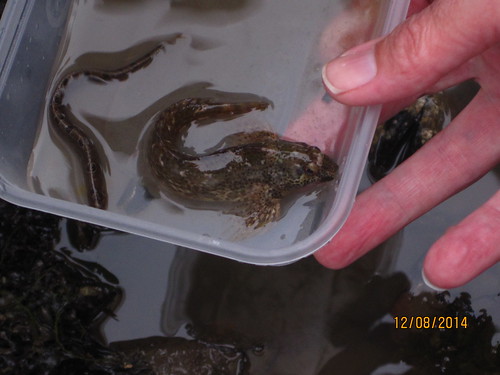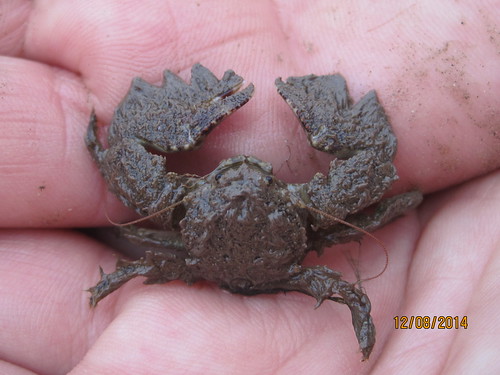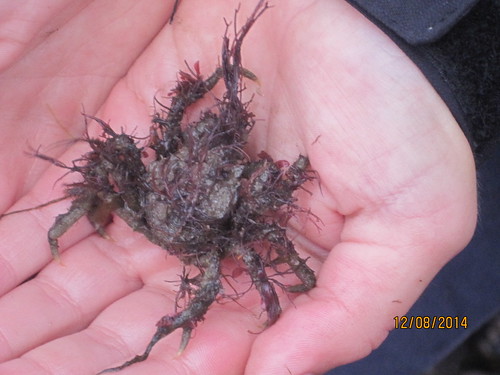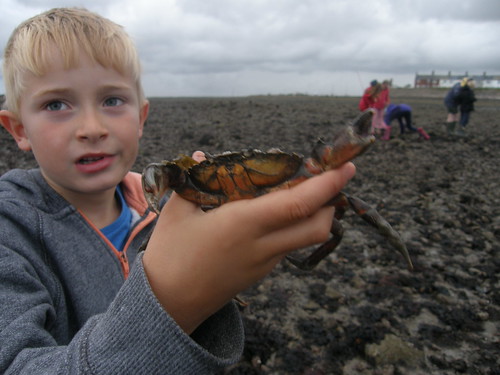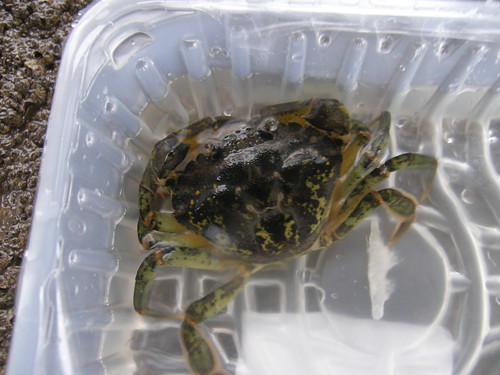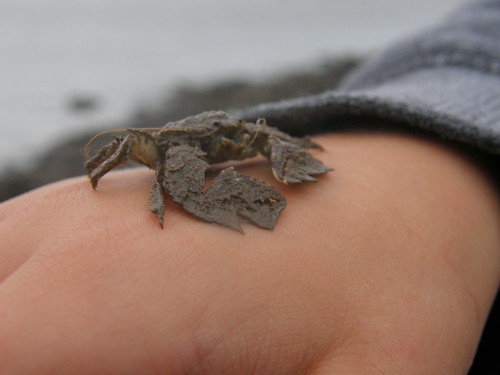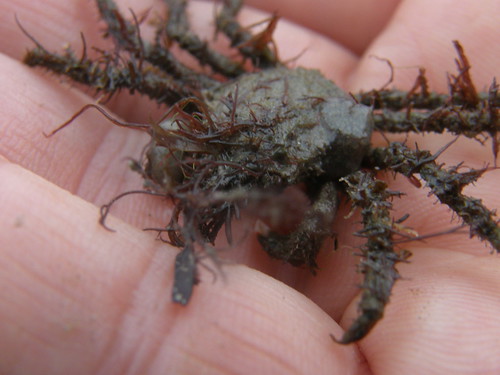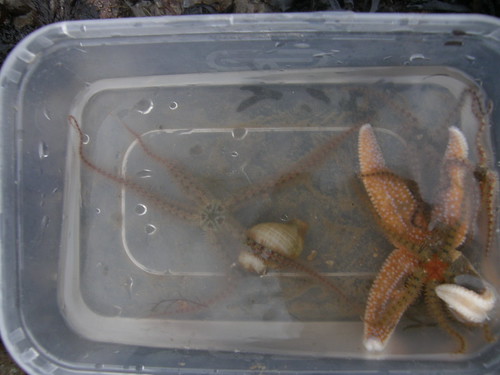We’ve spent our last couple of Whit weeks visiting with our good friends down in Herefordshire, so it seemed only right to invite them for a reciprocal visit. It was a much anticipated staycation for us: having been treated to a wide variety of days-out in their neck of the woods, we were excited to share the delights on our own doorstep and there had been long-running debates about which of our favourite outings we would choose.
High in the children’s top five was a trip to Mega Zone in Morecambe: essentially, running around in a dark room shooting each other with ‘lasers’. For some reason they seemed to think that, in particular, our friend Andy would be thrilled with the prospect of playing at soldiers. It was almost as if they think he’s a big kid at heart*.
Anyway, we’d been a couple of times this year already and I think our kids were hoping for a rainy day as an excuse to go again. They were duly rewarded on the first day of the visit (wet Wednesdays being something of a tradition for these ‘exchange’ weeks). All was going well until Little S ran around a corner into his sister’s ‘laser’ and split his lip rather badly. The cut crossed his vermillion border (the edge of his lip – something I learned from the whole sorry episode) which meant plastic surgery in Preston for Little S on the Thursday. I went with him and it was a very long day, but – they did do a terrific job and you have to look to find the scar now.
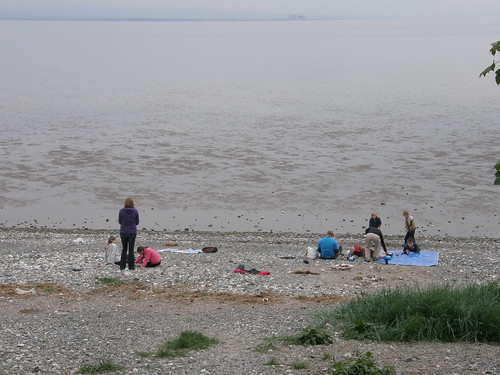
All of which meant that, for me, it felt like the holiday only really got started in earnest on the Friday. It was another rather gloomy day, but a bit of a cracker none the less. We went to Aldingham first. I’ve since found a list of Cumbria’s Top Ten Beaches, in which Aldingham comes in at Number 8. Mind you, Arnside is number 5 and Grange Over Sands is number 9, and neither of those places has any discernable beach. You can see that Cumbria is hardly blessed with miles of golden strands. The picture gives a reasonable impression of what Aldingham beach is like: a strip of pebbles and then miles of Morecambe Bay mud, with a distant view of Heysham Nuclear Power Station. We enjoyed it even so: building towers with the larger pebbles, having a brew and a picnic and making several feeble attempts to start a fire with driftwood and dried seaweed.
Next stop was Roa island, to catch the small ferry across the channel to Piel Island.
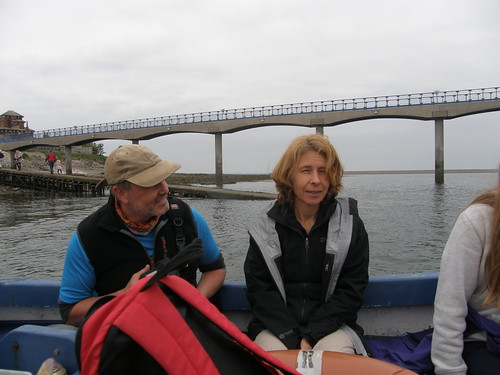
TBF is caught looking at the camera….

…but everyone else seems to be practising their Synchronised Looking-Away.

But the Dangerous Brothers** can be relied upon for a thumbs up!
We walked around the island. It doesn’t take long. There were eider ducks just off the shore and oystercatchers picking around in the pebbles.
There was a grim tide line of bleached crab shells and limbs…
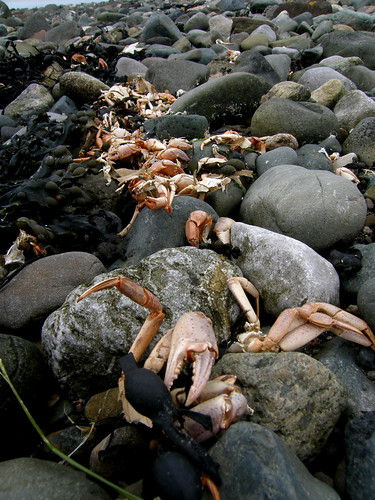
We wondered for a while about the cause of this phenomenon, but decided in the end that, rather than some mass extinction event, this was the result of the sheer numbers of crabs in the sea hereabouts and the lightness of the hollow remains which would all float up to mark the limit of the highest recent tide.
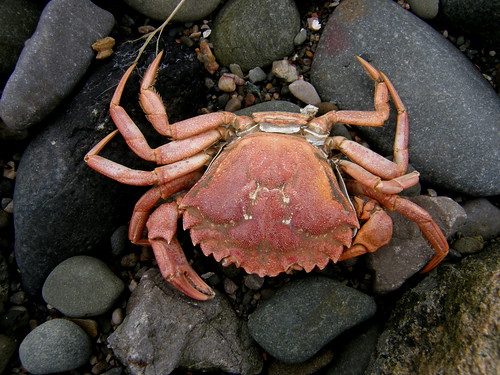
I’m always impressed by plants I haven’t seen before. I thought these very large leaved cabbagey clumps might be sea kale, because they look a bit like kale and they’re growing in a shingle beach. Having consulted the ‘Wildflower Key’, I’m pretty confident that I was right.
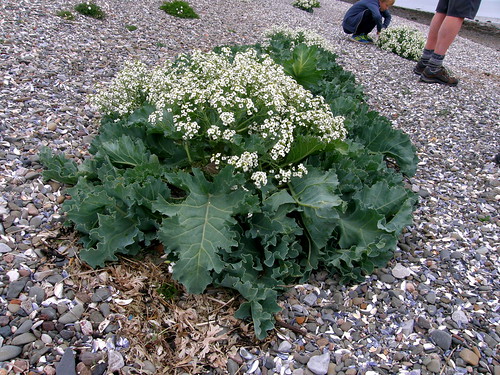
In ‘Food for Free’, Richard Mabey suggests eating young shoots, or stems which have been growing underground (they will push up through three feet of shingle apparently). He suggests cooking the stems for 20 minutes, which perhaps explains why I found Kale so unappetising when I tried it a while back, since I didn’t cook it for anything like that long, and it was as tough as old boots – or, actually, a great deal tougher than your average modern hiking boot. (Whinge, moan etc etc…) (To be fair my current pair are still doing well, although some of the stitching is looking a bit tatty. I’m told that I have very wide feet and that’s why I destroy boots.)
Piel Island is a bit of a miniature classic. It’s tiny, but it has a pub, you can camp there, and there’s a castle:
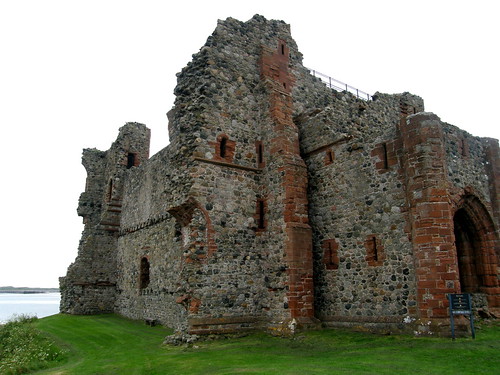
That bit of handrail visible on the Keep is a tease since it hints that it might be possible to get up there, but the stairs are locked and barred. There are many more photos of the castle (and some of its history) from our last visit here.

On the return journey, the boys win the ‘Looking Away’ competition. The Junior Sherpa makes a silent prayer for safe passage.
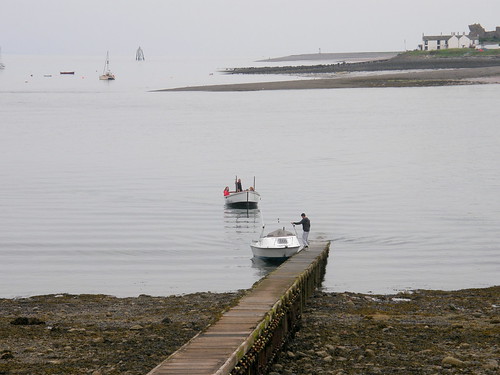
The Beach Funsters return on a separate sailing, no doubt discussing the optimum number of fleeces to pack for our seaside camp in July. Thirty-seven.
We returned to Aldingham for a barbecue on the beach and then yoyoed back to Roa Island for low tide, because the rock-pooling at Roa Island on a sufficiently low tide is second to none.
If Andy wasn’t in his element at Mega Zone, he certainly was now. To some people ‘Crabman’ is a character in the hit US comedy ‘My Name Is Earl’, but for me, it’s an ideal alternative nickname for The Shandy Sherpa.
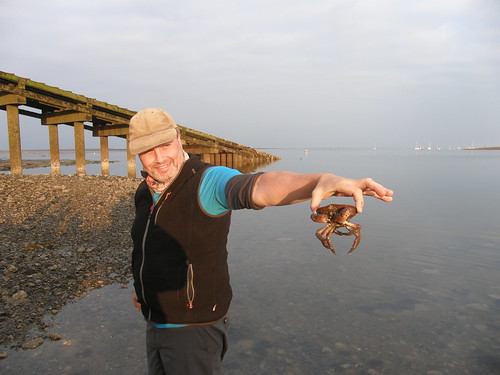
If there are crabs to be found on a beach, Andy will find them, catch them, play with their pincers in an all too cavalier fashion and stockpile them in a bucket. On Roa Island, you don’t turn over rocks wondering whether there will be a crab underneath, but how many there will be. And the answer is always: ‘Lots’.
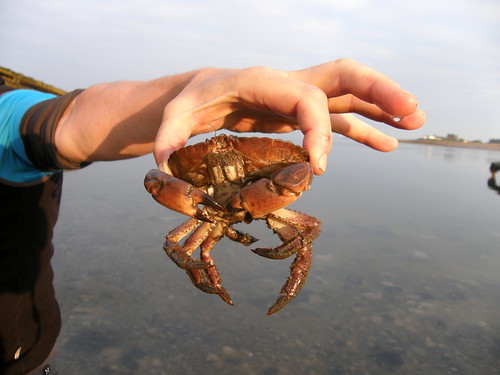
An edible crab. I think that this is the, apparently docile, crab which, when placed in a container with numerous shore crabs, proceeded to crush and splinter their carapaces with its claws. Oops.
There were hundreds of shore crabs. Also this gorgeous butterfish….

….starfish and brittle stars….
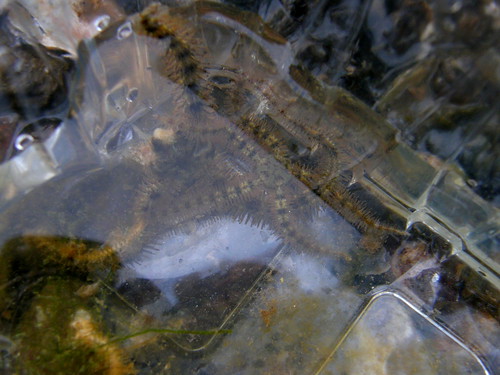
It had finally begun to brighten up a little.
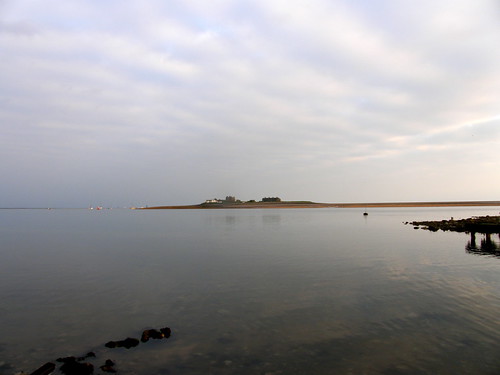
Piel Island.
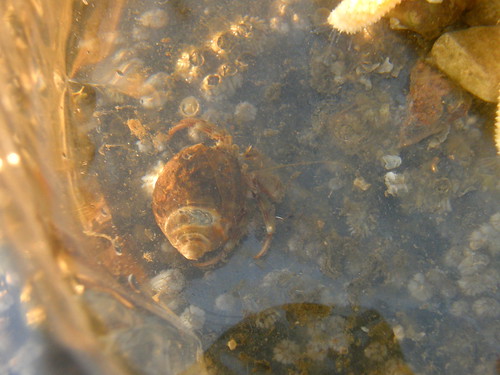
A hermit crab bathed in a late evening glow.
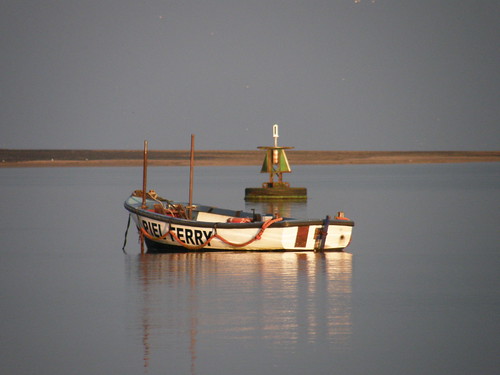
The ferry.
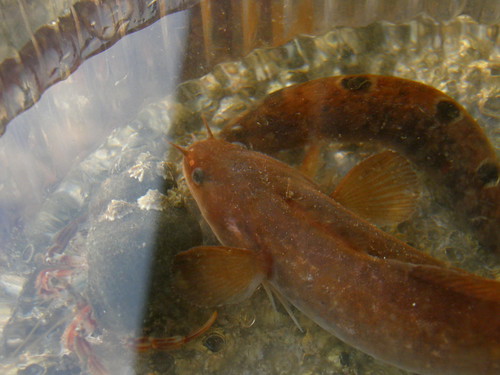
I think that this is a three-bearded rockling, because it was ‘pinkish orange’ and its head has three barbels as you can see in the picture, and just as the field guide specifies. If I’m right, we were lucky to find it as it is ‘Mostly sub-littoral but sometimes found in pools on lower shore.’ It can grow to 50cm in length, but this was much smaller than that.
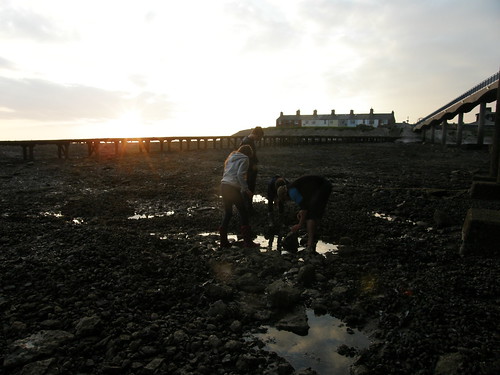
‘We’ll just turn over one more rock – who knows what we might find?’

We’ve already planned our next visit to Roa Island. And it’s not at all unlikely that we’ll be back at Piel Island and/or Aldingham again this summer.
Pictures from our last rock-pooling visit to Roa Island here.
*A Big Kid
He is. So am I. Is there any other way to be? Mega Zone was fantastic. Was, sadly, since it has subsequently had a large fire.
Slideshow here, courtesy of The Lancaster Guardian, of fire-fighters tackling the blaze.
**The Dangerous Brothers
This is Andy’s sobriquet for our boys, but, alarmingly, they have begun to refer to themselves this way too.
